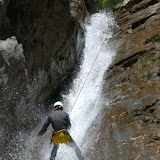Although reforms in the 1950s began to move the kingdom toward a democratic political system, the crown dissolved Parliament in 1960 and subsequently banned political parties. Thereafter, Nepal became only nominally a constitutional monarchy, and the constitution of 1962 (amended 1967, 1976, and 1980) effectively gave the king autocratic control over a multitiered system of panchayats (local bodies, or councils). In the 1980s, political restrictions were eased, and organizations such as the Nepali Congress Party, the Communist Party of Nepal, numerous small left-leaning student groups, and several radical Nepalese antimonarchist groups were allowed to operate more or less openly. Political parties, however, were not again legalized until 1990, when nationwide unrest forced King Birendra to accept the formation of a multiparty parliamentary system.
A new constitution promulgated on Nov. 9, 1990, greatly reduced the power of the monarchy. The king remained the head of state, but effective executive power was given to the Council of Ministers, headed by the prime minister. Appointed by the king, the prime minister is required to be either the leader of the majority party in the House of Representatives (the lower house of Parliament) or, if there is no majority party, a representative who can form a coalition majority.
The king is constitutionally also a part of Parliament and is charged with giving assent to bills that have been passed by both legislative chambers—the House of Representatives and the National Council (the upper house). The House of Representatives consists of 205 members popularly elected to five-year terms. The 60 members of the National Council hold six-year terms; 10 are nominated by the king, 35 are elected by the House of Representatives (of which 3 must be women), and 15 are selected by an electoral college. The constitution gives the House of Representatives considerably more power than the National Council.
All Nepalese citizens 18 and older are eligible to vote. Because most voters in Nepal are illiterate, candidates are chosen by party symbol (e.g., a tree for the Nepali Congress Party and a sun for the United Marxist-Leninist Party of Nepal). Some voters, moreover, must travel long distances, in some cases for hours along mountain paths, in order to reach a polling station.
Prior to 1990 the country was divided for administrative purposes into 5 development regions, 14 zones, and 75 districts; in addition, there were corresponding regional, zonal, and district courts, as well as a Supreme Court. The 1990 constitution mandated the elimination of the regional and zonal courts, which were to be replaced by appellate courts. The administrative divisions themselves continued to exist as provisional units.
A new constitution promulgated on Nov. 9, 1990, greatly reduced the power of the monarchy. The king remained the head of state, but effective executive power was given to the Council of Ministers, headed by the prime minister. Appointed by the king, the prime minister is required to be either the leader of the majority party in the House of Representatives (the lower house of Parliament) or, if there is no majority party, a representative who can form a coalition majority.
The king is constitutionally also a part of Parliament and is charged with giving assent to bills that have been passed by both legislative chambers—the House of Representatives and the National Council (the upper house). The House of Representatives consists of 205 members popularly elected to five-year terms. The 60 members of the National Council hold six-year terms; 10 are nominated by the king, 35 are elected by the House of Representatives (of which 3 must be women), and 15 are selected by an electoral college. The constitution gives the House of Representatives considerably more power than the National Council.
All Nepalese citizens 18 and older are eligible to vote. Because most voters in Nepal are illiterate, candidates are chosen by party symbol (e.g., a tree for the Nepali Congress Party and a sun for the United Marxist-Leninist Party of Nepal). Some voters, moreover, must travel long distances, in some cases for hours along mountain paths, in order to reach a polling station.
Prior to 1990 the country was divided for administrative purposes into 5 development regions, 14 zones, and 75 districts; in addition, there were corresponding regional, zonal, and district courts, as well as a Supreme Court. The 1990 constitution mandated the elimination of the regional and zonal courts, which were to be replaced by appellate courts. The administrative divisions themselves continued to exist as provisional units.


No comments:
Post a Comment